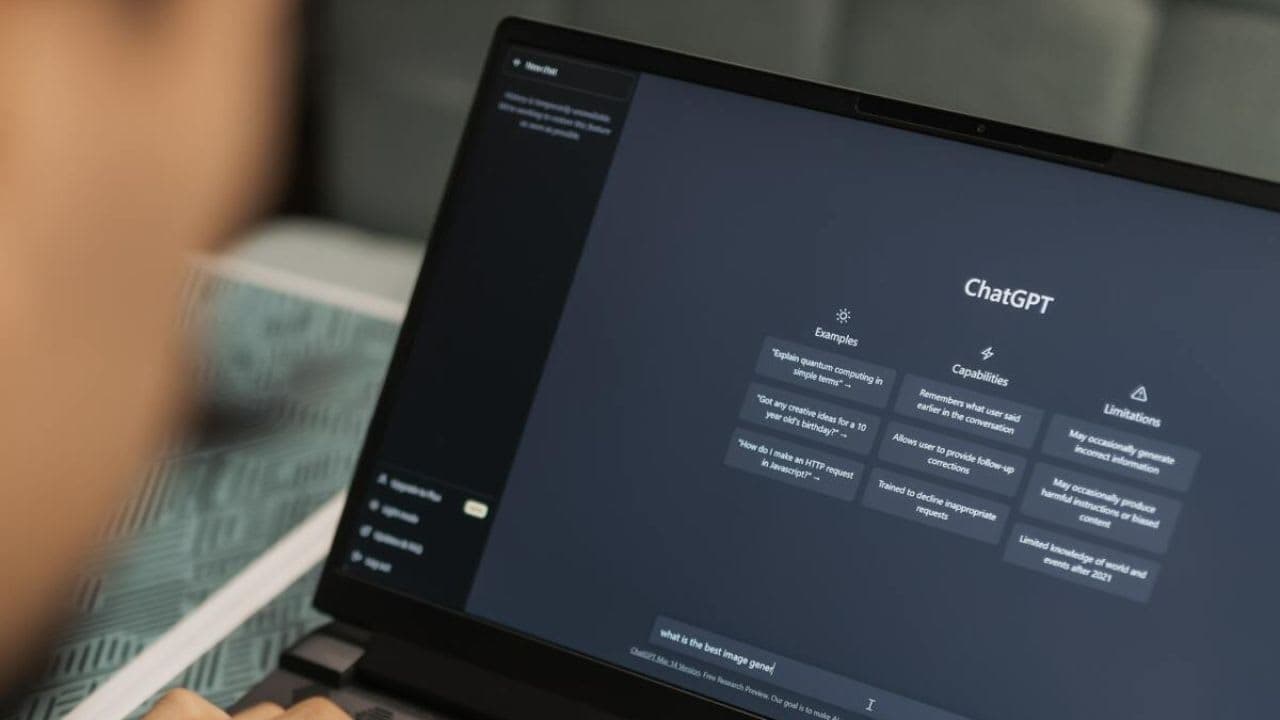How to Get ChatGPT Unblocked for School in 2025 (7 Working Methods)
ChatGPT Reverse Proxy – Everything You Should Know About
ChatGPT, created by OpenAI, is a versatile and user-friendly language processing model. The ChatGPT Reverse Proxy is a useful tool, offering enhanced accessibility and control across diverse applications. It offers you enhanced accessibility and control, allowing them to communicate with the OpenAI API with advanced features. It serves as an intermediary between you and OpenAI API, efficiently taking your input, forwarding it to the API, and delivering the response from the server back to you.
The ChatGPT Reverse Proxy
The ChatGPT reverse proxy serves as an intermediary between external systems and the ChatGPT API. Its primary role is to streamline requests, enhance security, and optimize performance. A reverse proxy is like a middleman, managing requests between you and ChatGPT. It helps keep your conversations secure and concise. The ChatGPT Reverse Proxy is your gateway to a more reliable and private experience.
The ChatGPT Reverse Proxy is equipped with robust security measures, such as HTTPS encryption. This ensures that your data including sensitive information is shielded from prying eyes. So, no need to worry about anyone trying to scrape your Facebook data while you chat away.
What Are The Features of the ChatGPT Reverse Proxy?
The following are the features of the ChatGPT reverse proxy:
Security Measures
The foremost feature of a ChatGPT reverse proxy is its robust security measures. Acting as a digital protector, it enforces authentication and authorization, ensuring that only authorized users can access the ChatGPT API. This feature is akin to having a secure checkpoint, preventing unauthorized entry and safeguarding sensitive information.
Load Balancing Capabilities
Efficient load balancing is a standout feature, contributing to the scalability of your applications. The reverse proxy intelligently distributes incoming requests across multiple instances of the ChatGPT API. This prevents overload on any single server, optimizing resource utilization and maintaining a responsive user experience. It’s like having a skilled traffic controller, ensuring a smooth flow of requests.
Caching Mechanisms
A ChatGPT reverse proxy excels in caching strategies, significantly improving response times. By storing and retrieving frequently requested data, it reduces the load on the ChatGPT API. This feature is akin to having a quick-reference library, where commonly accessed information is readily available, speeding up the entire process.
Centralized API Management
Another notable feature is the ability to centralize API management. The reverse proxy serves as a single point of entry for external systems, streamlining access and control. This centralized management ensures that API usage is monitored, controlled, and optimized. It’s like having a command center, where all operations are coordinated efficiently.
Logging and Monitoring
ChatGPT reverse proxies come equipped with robust logging and monitoring capabilities. These features allow you to track and analyze incoming requests, monitor performance metrics, and identify potential issues. It’s akin to having a vigilant surveillance system, keeping a watchful eye on the health and performance of your API interactions.
These features of a ChatGPT reverse proxy contribute significantly to the efficiency and security of API interactions.
What Are the Benefits of Using ChatGPT Reverse Proxy?
The following are the benefits of the ChatGPT Reverse Proxy:
Centralized Management
The reverse proxy centralizes the management of API access, offering a unified point for controlling usage and security measures. This ensures a more organized and secure system.
Bypassing Restrictions
ChatGPT reverse proxy is beneficial by bypassing restrictions imposed by firewalls and network configurations. You can directly communicate with OpenAI API since it is the bridge between the two. It allows you to have endless conversations without any blockage and usage restrictions.
Load Balancing for Scalability
ChatGPT handles a significant volume of requests. Redirecting all these requests to a single server can place an extra burden on the server, which may lead to a degradation in response time.
By distributing incoming requests across multiple instances of ChatGPT, the reverse proxy facilitates load balancing, which improves response time and overall user experience. This enhances scalability and reliability, especially in scenarios with fluctuating demand.
Enhanced Security
Security is paramount, especially when dealing with sensitive data or API interactions. A reverse proxy acts as a gatekeeper, adding an extra layer of protection. By handling authentication and authorization, it minimizes the risk of unauthorized access to the ChatGPT API. This is akin to having a vigilant guard at the entrance, ensuring only authorized personnel gain access.
Caching for Improved Response Times
Have you ever noticed how a frequently visited website seems to load faster? That’s likely due to caching. Similarly, a reverse proxy can be configured to cache responses from the ChatGPT API. This means that if the same request is made again, the proxy can provide the stored response instead of reaching out to the API anew. This not only speeds up response times but also reduces the load on the ChatGPT servers.
Customization
You can customize ChatGPT using a reverse proxy according to your domain or interest. This can enhance your experience and the overall efficiency of the application in a positive way.
Cost Saving
ChatGPT easily operates on devices like smartphones and tablets. You don’t have to have high-configuration laptops and devices. It also uses less energy to operate.
Implementing the ChatGPT Reverse Proxy
To leverage the benefits of the ChatGPT Reverse Proxy, a systematic implementation is necessary. This involves a series of steps aimed at ensuring a smooth and secure integration. These include:
Selecting a Robust Proxy Solution
Choosing the right reverse proxy solution is foundational. Popular choices include Nginx and Apache. These tools offer robust features, excellent community support, and proven track records. Selecting a reliable solution is akin to picking a trustworthy guide for your journey.
Configuration for Security
Once you’ve chosen a reverse proxy, configuring it for security is paramount. This involves setting up authentication mechanisms and defining access policies. For example, requiring API keys for access ensures that only authorized users can make requests, adding a crucial layer of security to your setup.
Load Balancing Configuration
Load balancing is the backbone of scalability. Configuring your reverse proxy to distribute requests evenly across multiple ChatGPT API instances prevents bottlenecks and ensures a smooth user experience.
What Are the Resources for ChatGPT Reverse Proxy?
When setting up a ChatGPT Reverse Proxy, it’s crucial to have a clear understanding of the resources involved. Here’s a concise overview:
- NGINX as Reverse Proxy: NGINX is a robust web server that excels as a reverse proxy. It efficiently handles incoming requests, forwarding them to ChatGPT while managing response distribution.
- SSL/TLS Certificates: Secure Socket Layer (SSL) or Transport Layer Security (TLS) certificates are essential for encrypting data between users and the reverse proxy. You should acquire a valid certificate from a trusted Certificate Authority to ensure secure communication.
- Domain Name System (DNS) Configuration: Configure DNS settings to point your domain to the reverse proxy’s IP address. This enables you to access ChatGPT via a user-friendly domain name.
- Server Hardware and Scaling: Ensure the server hosting the reverse proxy has adequate hardware resources. Plan for scalability to handle increased traffic by employing load-balancing techniques.
- WebSockets Support: Verify that the reverse proxy supports WebSockets, as ChatGPT relies on this protocol for real-time communication. Enable WebSocket connections to facilitate seamless interactions.
- Rate Limiting and Security Measures: Implement rate limiting to control the number of requests and prevent abuse. Strengthen security with measures like IP filtering, firewalls, and monitoring for suspicious activities.
- Proxy Buffering and Caching: Optimize performance by configuring proxy buffering to efficiently handle data between the reverse proxy and ChatGPT. Implement caching strategies to store frequently requested content, reducing response times.
- Logging and Monitoring: Set up comprehensive logging to track errors, user interactions, and system performance. Implement monitoring tools to promptly identify and address any issues.
- Configuration Management: Utilize configuration management tools to streamline the setup and maintenance of the reverse proxy. Ensure consistency across deployments and easy modification of settings.
- Documentation for Maintenance: Create detailed documentation outlining the reverse proxy setup, configurations, and maintenance procedures. This documentation aids in troubleshooting and future updates.
By meticulously addressing these key resources, you lay a solid foundation for a reliable and secure ChatGPT Reverse Proxy setup. This approach ensures optimal performance, scalability, and ease of maintenance for your system.
Bottom Line
ChatGPT reverse proxy is a powerful tool in the domain of API management, offering enhanced security, scalability, and performance optimization. By understanding its features, benefits, and practical implementation steps, you’re equipped to leverage this technology effectively in your projects.


